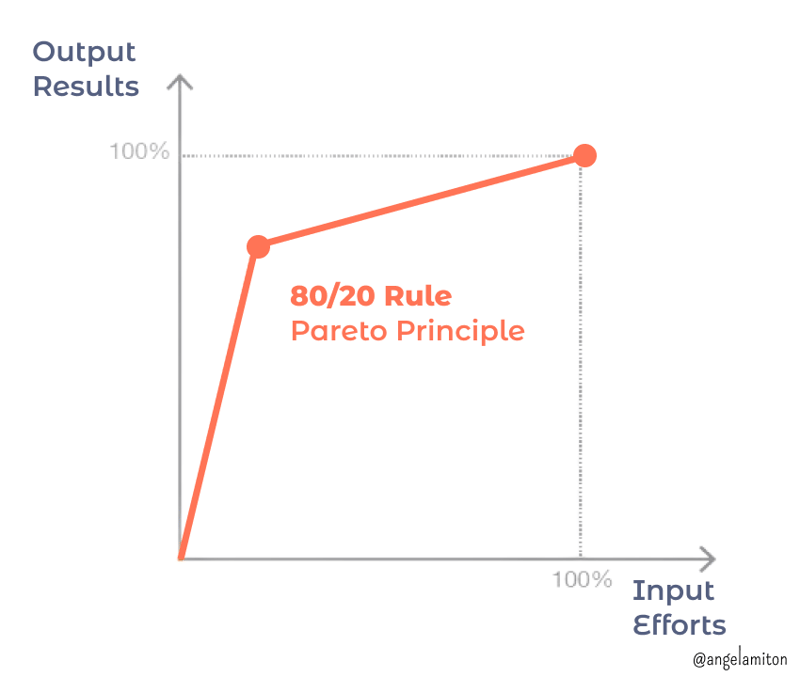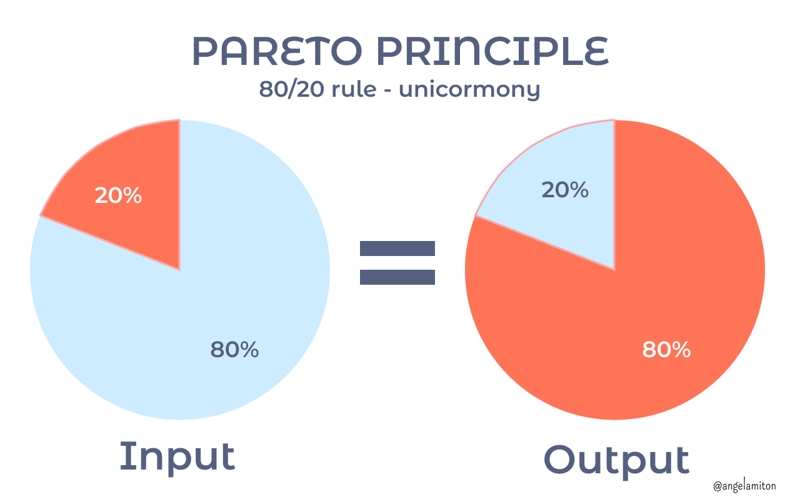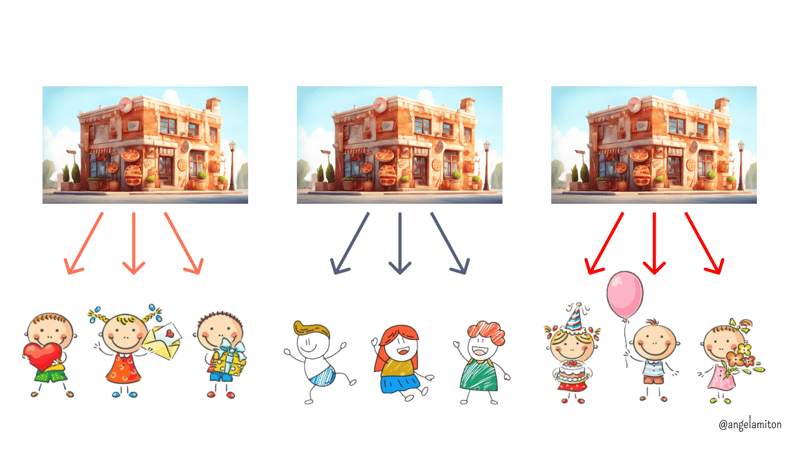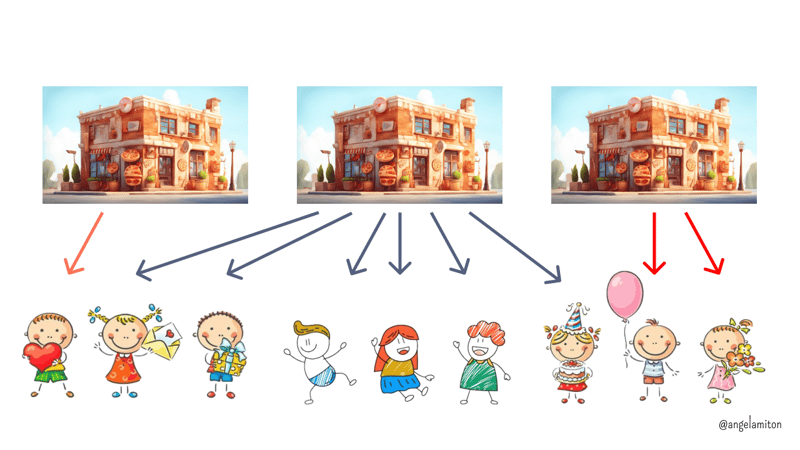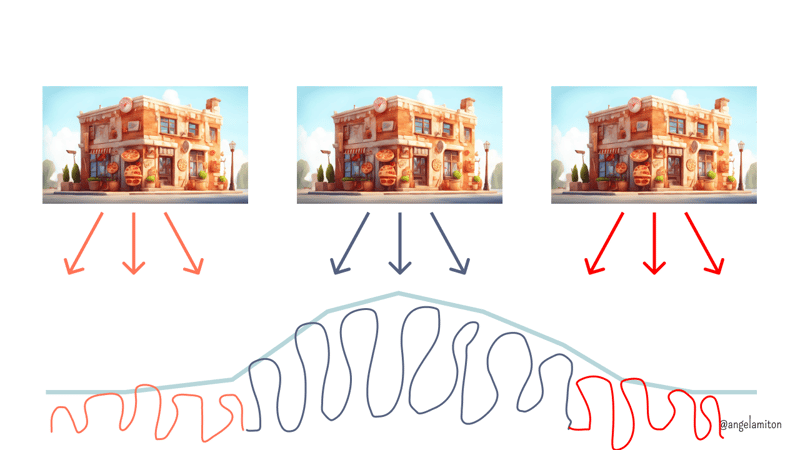dev-resources.site
for different kinds of informations.
Law of the universe
A significant portion of the yield emanates from a minor fraction of the effort…
The Power Law
Embedded within the fabric of the cosmos lies a fundamental principle that orchestrates much of our observations, actions, literary pursuits, visual engagements, and consumptive habits — The Power Law.
Succinctly put:
A substantial portion of the results emerges from a minuscule portion of the inputs. Conversely, the bulk of the inputs contributes insignificantly to the outcome.
You may be acquainted with the akin Pareto Principle, denoted as the 80/20 Rule. Numerous phenomena occurring in nature adhere to this paradigm, whereby 80% of the outcomes stem from 20% of the causes.
Consider, for instance, the prevailing trend observed across various domains: a notable 80% of sales, as an average, emanate from the top 20% of clientele within businesses. In the realm of economics, a staggering 80% of the global GDP is consolidated within a mere 20% of the world's population. Likewise, in the arena of sports, approximately 80% of the points amassed are attributed to the elite 20% of athletes. Moreover, within corporate settings, a significant chunk, precisely 80% of the allocated time, is dedicated to the completion of the final 20% of projects.
The Power Law, in its general applicability, extends beyond mere numerical distributions, beckoning us to delve deeper into its conceptual realm. Let us momentarily sidestep numerical rigidity and adopt a broader perspective. Throughout the vast expanse of the universe and the myriad forms of life it harbors, we find anecdotal evidence affirming two fundamental truths: the lion's share of output emanates from a scant portion of input, while the bulk of input makes marginal contributions to the overall output.
Illustrative examples abound:
- The lion's share of content consumed across the internet, constituting the output, originates from a select few sources, reflecting the concentrated nature of input. Conversely, the majority of content generated on the internet, serving as input, garners scant attention from consumers, resulting in minimal output.
- A handful of highly prosperous enterprises dominate the market, furnishing most of the products we purchase, while a multitude of companies languish with products that fail to capture consumer interest.
- The genesis of the articles featured in this newsletter often stems from sporadic bursts of inspiration, signifying that a significant portion of the time dedicated to writing yields little of discernible value.
Here’s a way to visualize this more general Power Law:
The redistribution of inputs and outputs may undergo alterations, yet the notion of concentrated, disproportionate influence remains as ubiquitous as any other statistical principle. There exists no circumvention of this reality.
**Why Does the Power Law Manifest?
**There exist mathematical elucidations for the ubiquity of this phenomenon. However, I find it more compelling to ponder intuitively.
Consider a hypothetical scenario of competitive companies, such as ten pizza establishments emerging within the same locality. The Power Law stipulates that, with time, one or two of these entities will dominate the majority of pizza sales in the town. Concurrently, the vast proportion of pizza establishments will cater to only a fraction of the town's populace.
Initially, the distribution of pizza sales appears egalitarian:
Over time, the distribution begins to resemble The Power Law distribution instead:
Why does this phenomenon occur? In part, it can be attributed to the dynamics of positive and negative feedback loops, a subject previously discussed in this forum. When a pizza establishment garners positive reviews online, it attracts increased attention from potential patrons, thereby generating more positive feedback, thus perpetuating a cycle of acclaim. Conversely, as a pizza place begins to exhibit signs of emptiness, prospective customers are disinclined to visit, further exacerbating its decline. Moreover, the impact of negative reviews diminishes the establishment's appeal, dissuading potential customers and impeding its ability to amass favorable evaluations.
It is scarcely surprising, then, that certain pizza establishments gradually erode the market share of their competitors, employing a combination of reputation and ambiance to their advantage.
This same principle underlies the virality of online content. Material that gains traction through initial sharing experiences a compounding effect, facilitated by both inherent quality disparities and chance fluctuations. Thus, a cascade effect ensues, propelling content into the realm of viral dissemination.
The Contrary Dynamic
Nevertheless, according to such reasoning, ought not the snowball perpetually accrue mass? Should not pizzerias that steadily draw in larger clienteles inevitably obliterate their competitors altogether? Does not the 80/20 principle merely mark a brief interlude en route to a 90/10 paradigm and ultimately a 100/0 dominance?
This inquiry illuminates what I contend to be among the most neglected facets of The Power Law. To elucidate, let us examine this tenet from an alternative perspective:
The curvature evident in the lower section is denoted as a normal distribution, colloquially known as the "bell curve," which represents a ubiquitous statistical phenomenon. Its manifestations extend across diverse domains such as probability theory, physics, standardized assessments, opinion polling, financial analysis, and biological studies.
In contrast to the Power Law, which accentuates the aggregation of outcomes among the elite few, the normal distribution underscores the perpetual existence of outliers despite the degree of centralization achieved. Thus, we discern the interplay of two opposing statistical forces.
Not all individuals gravitate towards the pinnacle of popularity; preferences vary based on locale, ambiance, brand loyalty, and aversion to crowded venues. Consequently, deviations from the distribution's mean are observable as individuals opt for alternatives diverging from the mainstream.
Each previously enumerated point warrants scrutiny:
The internet's content consumption predominantly emanates from a select few sources, while a plethora of content remains underexplored; nonetheless, there persists an audience for niche content nestled within the long tail.
The lion's share of consumer goods originates from a handful of corporate juggernauts, leaving the offerings of numerous other companies largely untapped; nevertheless, a segment of the populace seeks and patronizes alternative products.
The genesis of newsletter articles often springs from sporadic bursts of creativity, with many writing sessions yielding seemingly inconsequential output. Nevertheless, even ostensibly trivial endeavors contribute to the iterative refinement of future endeavors, thereby possessing intrinsic value.
Reflections on Borrowed Insights
The pervasive influence of the Power Law and normal distributions prompts frequent contemplation, given their pervasive presence in our daily affairs. This sentiment is not unique to me alone. In conclusion, I offer several insightful quotations pertaining to both phenomena:
"The scarcity of time should not concern us as much as the proclivity to squander it in unproductive pursuits." - Richard Koch
"The awe-inspiring elegance of cosmic order epitomized by the law of normal distribution seldom fails to captivate the imagination. The greater the multitude, the more chaotic its appearance, yet more pronounced is the law's governance. It reigns supreme as the archetype of disorder." - Sir Francis Galton
"Identify the pivotal actions that yield the greatest positive impact on daily routines. Prioritize them accordingly. Conversely, identify and eliminate the primary sources of stress and friction." - James Clear
"Normality remains an elusive notion; the notion of a truly normal distribution is a fallacy, both in theory and practice." - Roy C. Geary
Featured ones:
